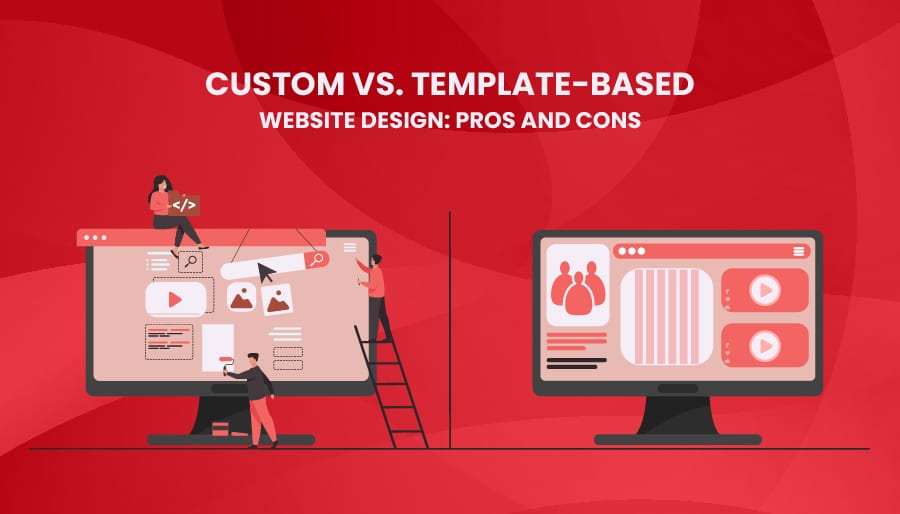The navigation of a website is an essential component of the user experience (UX) design process. Users are able to locate content more quickly and simply with the assistance of a navigation system that has been thoughtfully built, which improves the website’s overall usability and efficacy. In this book, you will be guided through the fundamentals of mastering website navigation, beginning with an awareness of the significance of the topic and ending with the implementation of best practices. Mastering Website Navigation: A Beginner’s Guide
Understanding the Importance of Website Navigation
The Role of Navigation in User Experience
The user experience is dramatically impacted by navigation in a powerful way. Essentially, it functions as a road map, directing people across your website and assisting them in locating the information that they require. By making it simple for users to locate the results they are searching for, effective navigation may help minimize bounce rates, increase the amount of time visitors spend on a website, and enhance conversion rates.

Impact on Search Engine Optimization (SEO)
SEO is also affected by navigation that is effective. For the purpose of crawling and indexing webpages, search engines such as Google make use of navigation systems. It is possible for search engines to better grasp the content and context of your website if you have a navigation system that is well-organized. This will increase your exposure in search results.
Key Principles of Effective Website Navigation
Simplicity and Clarity
Providing assistance to users in locating information is the major objective of navigation. As a result, simplicity and clarity are of the utmost importance. Take care not to overcrowd your navigation menus with an excessive number of alternatives. Keep your focus on the most significant links that will lead users to the most vital sections of your website.
Consistency
Users are able to construct a mental model of your website more easily when navigation is consistent. Ensure that all of the pages have the same navigation structure and design elements implemented. It is because of this consistency that users are able to anticipate where they will find information, which makes navigation more straightforward.
Responsive Design
The importance of ensuring that your navigation is compatible with all devices cannot be overstated in the mobile-first world of today. You can ensure that your navigation will adjust to multiple screen sizes by using responsive design. This will ensure that consumers have a smooth experience regardless of whether they are using a desktop computer, tablet, or smartphone.
Types of Website Navigation
Top Navigation Bar
One of the most prevalent forms of navigation bars is the top navigation bar, which is sometimes referred to as the horizontal navigation bar. The majority of the time, it is located at the very top of the page and typically contains links to the primary sections of the website. The navigational structure described here is perfect for websites that have a restricted number of core sections. Mastering Website Navigation: A Beginner’s Guide
Side Navigation Bar
The vertical navigation bar, often known as the side navigation bar, can be positioned on either the left or right bank of the page. It is advantageous for websites that contain a large number of sections or categories since it enables a more extensive list of links to be displayed without being too overwhelming for the visitor.
Footer Navigation
In the bottom of the page is where you will find the navigation for the footer. Secondary links, such as those pertaining to privacy policies, terms of service, and contact information, are frequently referenced using this. When it comes to navigation, the footer is an excellent location to include links that people might be looking for but are not crucial to the core navigation.

Mega Menus
Mega menus are enormous menus that can be expanded and display several links at precisely the same time. Users are able to view a broad variety of alternatives without having to navigate through several pages, which makes them handy for websites that have complicated architecture, such as those that are specifically designed for online shopping.
Best Practices for Designing Website Navigation
Use Descriptive Labels
You should make sure that the labels you use in your navigation are understandable and descriptive. In order to avoid confusing users, you should avoid employing jargon or terminology that are extremely inventive. Remain consistent with words that are widely used and appropriately reflect the content that users will find.
Limit the Number of Menu Items
Despite the fact that it is crucial to contain all required links, consumers may become overwhelmed if there are too many options. You should strive to maintain a main navigation menu that contains between five and seven items. Make use of sub-menus or drop-down menus to organize additional links in order to maintain a clear primary navigation.
Incorporate a Search Bar
A search bar is an extremely useful feature for users who are already aware of the specific information they are looking for. It is possible to dramatically improve navigation by prominently placing a search bar on your website, particularly for websites that contain a lot of content.
Highlight the Current Page
Users are better able to grasp where they are located within your website when the current page is highlighted. You can make use of visual clues such as changing the color of the link that is currently on the page or accenting it. This seemingly insignificant aspect can go a long way toward improving the user experience.
Implement Breadcrumbs
There is a supplementary navigation aid known as breadcrumbs, which displays to users the path that they have taken in order to arrive at the present page. These features are especially helpful for websites that have complex hierarchies since they make it simple for users to navigate back to earlier areas of the page.
Testing and Improving Navigation
User Testing
The procedure of user testing is an essential part of the design process. In order to determine how real people interact with your navigation, you need conduct testing with them. Give careful consideration to any challenges they face and make use of the feedback they provide in order to enhance the situation.
Analytics and Feedback
To monitor how users navigate your website, you can make use of analytics tools. Be on the lookout for trends in their behavior, such as pages that they visit regularly and departure points that they use frequently. In addition, users should be encouraged to submit feedback regarding their navigation experience, and this information should be used to create improvements that are informed.
Continuous Improvement
The navigation of a website is not a design element that can be set up and forgotten about. User input, changes in content, and new best practices should all be taken into consideration when reviewing and updating your navigation on a regular basis. Through continual enhancement, you can guarantee that your navigation will continue to be efficient and user-friendly.
Conclusion
Mastering the navigation of your website is vital if you want to improve the overall effectiveness of your site and provide a nice experience for your users. By gaining a grasp of the significance of navigation, putting into practice fundamental concepts, and adhering to best practices, it is possible to develop a navigation system that is not only user-friendly but also highly effective. In order to satisfy the ever-evolving requirements of your users, it is important to remember to test and continuously enhance your navigation.






